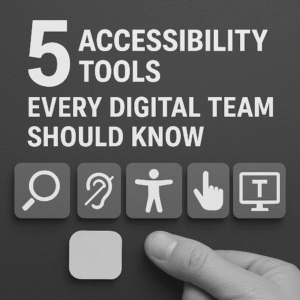In the world of the internet today, making e-commerce websites accessible is not just a recommendation but a requirement. One strong technique we use in creating accessibility for everyone is ARIA (Accessible Rich Internet Applications). Let us comprehend how implementing ARIA in e-commerce can enhance your e-commerce site to be more inclusive and easy-to-use.
Introduction to ARIA Roles, Properties, and States
ARIA is an acronym for Accessible Rich Internet Applications. It gives attributes that describe ways to make web content and applications more accessible to individuals with disabilities. The three main components of ARIA are:
- Roles: Define the type of element and its purpose (e.g., button, menu, slider).
- Properties: Express characteristics of elements (e.g., aria-required, aria-label).
- States: Describe the current condition of an element (e.g., aria-expanded, aria-checked).
These components work together to provide semantic meaning and context to screen readers and other assistive technologies.
Read On Accessibility Testing for E-commerce Websites
Enhancing Dynamic Content for Accessibility
E-commerce sites often feature dynamic content that can pose challenges for users with disabilities. ARIA helps bridge this gap:
- Live Regions: Use aria-live to announce dynamic content changes, such as updated cart totals or search results.
- Modal Dialogs: Implement aria-modal and manage focus for accessible pop-ups and overlays.
- Form Validation: Utilize aria-invalid and aria-described to communicate form errors effectively.
Examples of ARIA Implementation in E-commerce
Let’s look at some practical examples of ARIA in e-commerce contexts:
- Product Listings:
<ul role="list">
<li role="listitem">
<article aria-labelledby="product-title-1">
<h2 id="product-title-1">Ergonomic Office Chair</h2>
<img src="chair.jpg" alt="Black office chair with lumbar support" />
<p>Comfortable seating for long work hours</p>
<button aria-label="Add Ergonomic Office Chair to cart">Add to Cart</button>
</article>
</li>
<!-- More list items -->
</ul>- Shopping Cart:
<div role="region" aria-label="Shopping Cart">
<h2>Your Cart</h2>
<ul role="list">
<!-- Cart items -->
</ul>
<p aria-live="polite" id="cart-total">Total: $249.99</p>
<button aria-describedby="cart-total">Proceed to Checkout</button>
</div>- Product Filters:
<div role="region" aria-label="Product Filters">
<h3>Filter By:</h3>
<div role="group" aria-labelledby="size-heading">
<h4 id="size-heading">Size</h4>
<ul role="list">
<li>
<input type="checkbox" id="size-s" aria-describedby="size-heading" />
<label for="size-s">Small</label>
</li>
<!-- More size options -->
</ul>
</div>
<!-- More filter groups -->
</div>By Implementing ARIA in E-commerce in these ways, we significantly improve the user experience for people relying on assistive technologies. Remember, ARIA should complement proper HTML semantics, not replace them.
Implementing ARIA in your e-commerce site demonstrates a commitment to inclusivity and can expand your customer base. It ensures that all users, regardless of their abilities, can navigate, understand, and interact with your online store effectively.
As you continue to develop and refine your e-commerce platform, keep accessibility at the forefront of your design and development processes. By doing so, you’re not just complying with guidelines—you’re creating a better web for everyone.



